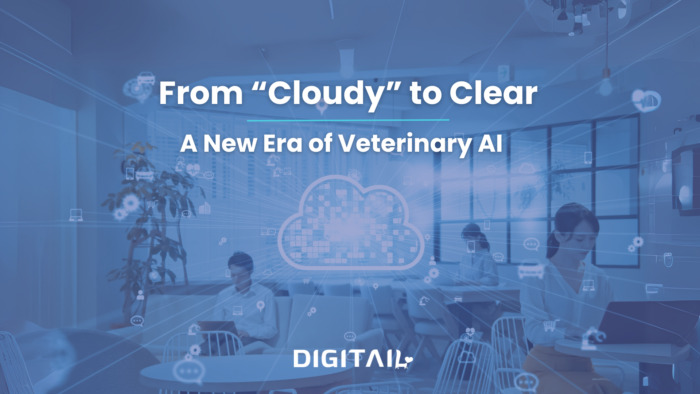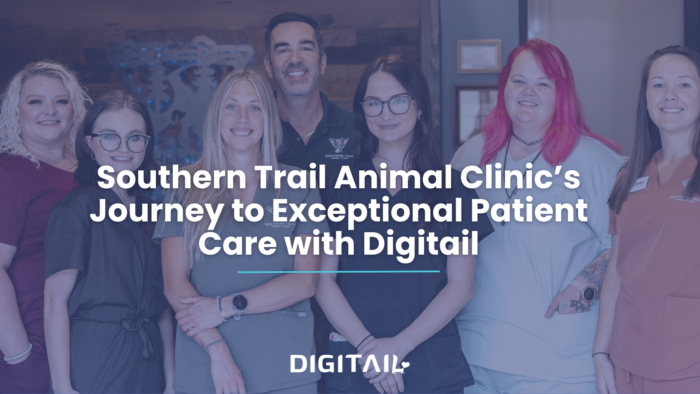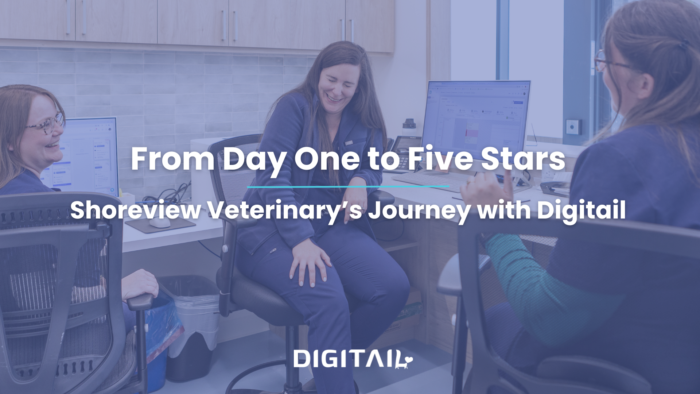
Beyond the Tech, AI is the Fulfillment of Our Professional Oath
Introduction
Gentlemen, progress has never been a bargain. You’ve got to pay for it. Sometimes I think there’s a man behind a counter who says, “All right, you can have a telephone; but you’ll have to give up privacy, the charm of distance. Madam, you may vote; but at a price; you lose the right to retreat behind a powder-puff or a petticoat. Mister, you may conquer the air; but the birds will lose their wonder, and the clouds will smell of gasoline!”
Jerome Lawrence; Robert E. Lee. Inherit the Wind (p. 93). Random House Publishing Group. Kindle Edition.
Thomas S. Kuhn’s seminal 1962 work The Structure of Scientific Revolutions popularized the phrase “paradigm shift,” and so memorable was it that its use has come to be sadly banal and trite in decades of overuse since. Other adjacent words and phrases have lost their glimmer beneath the dust of habit as well. “Innovative” and “revolutionary” and “disruptive” have been so widely and imprecisely applied that they rarely still rouse the excitement of their true meaning in the reader’s mind.
And yet, when it comes to the recent advances in artificial intelligence, these words certainly apply. They’re nearly unavoidable despite their fading potency. In a wordsmith’s effort to evoke in readers the kind of powerful emotion once drawn by these words, I likened the widespread and pluripotent applications of artificial intelligence to a tectonic shift rather than a paradigm shift. A “paradigm shift” is a more appropriate subtitle for a professional white paper, but it feels too small, too narrow to describe what is happening. AI will change things even for those who do not consciously employ or understand it. It will do more than change the way we think, it will change the way we see the world and navigate it. This technology will change and shape the foundations of the way we work and live. The changes will broadly improve many aspects of our lives, will inevitably destroy a few others, and will be utterly irresistible to those of us experiencing it.
A little more than a year ago, I learned what a large-language model (LLM) was. And I knew I needed to learn a lot more. The potential applications of LLMs to veterinary medicine are hard to exaggerate, and other forms of artificial intelligence, like deep neural networks and convolution neural networks, hold tremendous potential as well.
What are these clever bits of software that have the world all up in arms? Why are people wondering if AI will take over the world? Why are some worried that AI will take our jobs? What are the ethical concerns? And the practical ones?
Artificial intelligence differs from traditional software most significantly in its problem-solving approach. Where traditional, deterministic software operates based on predefined rules and logic set by programmers, AI software, especially those with machine learning, learns from its own data. AI is designed to mimic human cognitive functions like learning, problem-solving, and decision-making. AI is probabilistic rather than deterministic.
This difference makes AI software highly flexible and adaptable. It can adjust its outputs based on new inputs, making it much more suitable for tasks where the requirements frequently change or are not fully known in advance. If you ask an LLM to reply to an email, it will take the data upon which it has been trained and use it to predict your response to an email. Some LLMs have been trained on relatively modest amounts of data, while others, like OpenAI’s ChatGPT or Google Bard, have been trained on massive amounts of data. Because of its more extensive training, its prediction results are better.
One of the challenges facing AI is acquiring and processing that training data. Traditional software relies on specific algorithms and predetermined logic, it will do exactly and only as it was programmed to do. AI needs bigger, more complex datasets for meaningful training, and until recently, such compilations and processing were nearly impossible. Even now, the computing power required by an AI LLM is still a limiting factor in its use. That’s partly because the AI software is processing the data — often in real-time — a crucial aspect of its decision-making processes.
All this means that artificial intelligence has use cases in diagnostic imaging, disease detection and prediction, remote patient monitoring, genetic analysis, pharmaceutical development and testing, and much more. There is almost no aspect of our work that will not be affected by artificial intelligence, which is why this study from Digitail and the American Animal Hospital Association is so exciting.
In just the past year, there have been dozens of animal health companies and thousands of providers newly employing artificial intelligence in their work. The results show just how widespread the use is already, and indicate that its spread will continue rapidly.
It’s perhaps a bit mismatched that I find the results indicating rapid adoption of technology because of what it represents to a venerable but fundamental piece of veterinary medicine: the Veterinarian’s Oath.
Being admitted to the profession of veterinary medicine, I solemnly swear to use my scientific knowledge and skills for the benefit of society through the protection of animal health and welfare, the prevention and relief of animal suffering, the conservation of animal resources, the promotion of public health, and the advancement of medical knowledge.
I will practice my profession conscientiously, with dignity, and in keeping with the principles of veterinary medical ethics.
I accept as a lifelong obligation the continual improvement of my professional knowledge and competence.
In the adoption and use of artificial intelligence, I see veterinarians honoring the promises of this oath. Through the application of AI and weaving it into their practice of medicine, I see veterinarians using their scientific knowledge and skills to benefit society, protecting animal health and welfare, preventing and relieving animal suffering, conserving animal resources, promoting public health, and advancing medical knowledge. I see them practicing conscientiously and with dignity while honoring and elevating our ethical principles. And, most importantly, I see them committed to their lifelong obligation of continually improving their knowledge and competence.
I know relying on an “oath” with all the archaic connotations carried with the word verges on the maudlin, especially when touting software usage statistics. But I stand by it, because in it I see in the statistics, the pursuit of better medicine, and a demonstration of the ferocious passion that so many of us have to do right by our patients.
Adoption and Sentiment
Ingenuity is often misunderstood. It is not a matter of superior intelligence but of character. It demands more than anything a willingness to recognize failure, to not paper over the cracks, and to change. It arises from deliberate, even obsessive, reflection on failure and a constant searching for new solutions.
Gawande, Atul. Better: A Surgeon’s Notes on Performance (p. 9). Henry Holt and Co.. Kindle Edition.
The adoption of and sentiment towards artificial intelligence is impressive. While the group may have self-selected for those with an interest in AI, the findings are nonetheless substantial.
An astonishing 83.8% of veterinarians are familiar with AI and its applications, with a predictably higher rate of familiarity in younger veterinarians. Interestingly, younger veterinarians also reported relatively high skepticism toward artificial intelligence and associated tools.
The cynical among us may have a reflexive instinct to assume that “familiarity” and “skepticism” are at odds with one another, but I don’t believe that’s the case. Just as it’s the experienced driver, rather than the novice, who leaves an extra car length of stopping room in heavy traffic, it’s those familiar with technology who are able to act with the wisdom of skepticism. In using any technology in the practice of medicine, especially a probabilistic and imperfect one, it’s important not to fall asleep at the wheel.
More attention-getting is the number of respondents who have tried the tools for professional tasks, with roughly 39.2% of respondents reporting use and 69.5% of those reporting daily or weekly use. The study also found a direct correlation between the usage of AI tools in the professional setting and the level of enthusiasm towards this technology.
I believe in this technology’s real-world applications, so learning about its widespread use is deeply encouraging. In less than a year, veterinarians report a level of adoption similar to computer programmers. I’ve occasionally heard that veterinarians are slow to adopt new technology, but it would seem that this is not the case when the technology is pluripotent, affordable, and accessible.
Current Applications and Perceived Benefits
“Now I’m using an electric guitar. Which, of course, is a big improvement over the old steam-powered or gasoline-powered guitars.”
James Taylor
Veterinarians are already using a variety of AI models for a variety of use cases, including diagnostic imaging, administrative tasks, and voice-to-text transcription. Respondents further identified areas where AI has the most positive impact as client education, patient record management, and medical triage. Incorporating AI into hospital workflows could contribute significantly to profitability, revenue growth, employee satisfaction, client retention, and, of greatest import, patient care.
While the existing technology is imperfect and far from omnipotent, it is pluripotent, allowing an almost unlimited number of use cases. I believe the ability of AI to lift the “bandwidth burden” on veterinarians is among its most valuable impacts. An LLM can ease the weight of emotionally heavy communication, it can aid the conveyance of a complicated idea, it can overcome language barriers, it can facilitate not just understanding but empathy as well.
That benefit cannot be understated. In a professional experiencing crises of both mental health and productivity, the potential to broaden the veterinarian’s individual bandwidth is powerful. With more to give, such a veterinarian will have an opportunity to be a better doctor, a better leader, and perhaps even a better person.
Barriers to and Drivers of Adoption
“For this discovery of yours will create forgetfulness in the learners’ souls, because they will not use their memories; they will trust to the external written characters and not remember of themselves. The specific which you have discovered is an aid not to memory, but to reminiscence, and you give your disciples not truth, but only the semblance of truth; they will be hearers of many things and will have learned nothing; they will appear to be omniscient and will generally know nothing; they will be tiresome company, having the show of wisdom without the reality.”
Socrates to Phaedrus, relating the fable of the invention of writing, from Thamus to Thoth. Plato; Original Thinkers Institute. Phaedrus: The Madness of Eros, and Ideal Love (Grapevine edition) (p. 111). Kindle Edition.
There are legitimate concerns regarding the use of artificial intelligence, although again, I find myself untroubled by the study’s findings. Concern and caution are not solely reflections of timidity or fear but can also simply be manifestations of wisdom and understanding.
The most prevalent concerns about artificial intelligence are the reliability and accuracy of the AI system (70.3% of respondents) and data security and privacy (53.9% of respondents). These numbers don’t worry me as an advocate for AI use because they represent an understanding of how the software works as well as at least a broad sense of the importance of data security.
Artificial intelligence is not deterministic software, it’s probabilistic software. That means that in addition to profound versatility and what passes for creativity, it will get things wrong occasionally. Its potential for hallucination is important for users to know, and at least 70.3% of the respondents to the study are correctly wary of its capacity for error. I do not think this is truly a barrier to its use any more than the potential for a car accident is keeping some people from driving. Sure, there are those who will be unconvinced, but many more have already seen its value and learned the risks.
The concerns about data security are legitimate as well, but they again demonstrate an understanding of technology, not just AI. That concern is a valid one for anyone using the internet, cellular phone, or bank. It’s not paranoia, it’s just good sense. Early adopters aren’t only made up of those who casually tossed caution to the wind; it’s also those who did their due diligence and decided what was a safe way to use new technology.
I’m not yet convinced that valid concerns are truly barriers to adoption; rather, I feel that they reflect an understanding of the risks of the technology as well as its benefits.
Future Outlook
Almost every foundational technology ever invented, from pickaxes to plows, pottery to photography, phones to planes, and everything in between, follows a single, seemingly immutable law: it gets cheaper and easier to use, and ultimately it proliferates, far and wide.
Suleyman, Mustafa. The Coming Wave: Technology, Power, and the Twenty-first Century’s Greatest Dilemma (p. 19). Crown. Kindle Edition.
Artificial intelligence in veterinary medicine is not a future possibility but rather a present reality. The impact is already observable. And veterinary medicine is not immune to the same forces that impact the economy as a whole. I believe that AI will become as ubiquitous as WiFi, smartphones, internet access, and a litany of other technologies became ubiquitous. I contend that while it is our professional obligation to experiment with and employ this technology, it is also our responsibility as adults to endeavor to observe and seek understanding about the world in which we live.
A mere 15.5% of respondents expressed clear opposition to AI. Whether that opposition is borne of understanding or ignorance is not clear, but rarely does innovation and evolution come from outright rejection. The overwhelming majority of veterinarians (>85%) are either currently using or interested in using AI. Incorporating AI into hospital workflows could contribute significantly to profitability, revenue growth, employee satisfaction, client retention, and, most importantly, patient care.
Conclusion
“James,” he said in a gentle voice, “there is one fundamental rule in our job which transcends all others, and I’ll tell you what it is. YOU MUST ATTEND. That is it and it ought to be written on your soul in letters of fire.” He raised a portentous forefinger. “YOU MUST ATTEND. Always remember that, James; it is the basis of everything. No matter what the circumstances, whether it be wet or fine, night or day, if a client calls you out, you must go; and go cheerfully.
Herriot, James. All Creatures Great and Small (p. 71). Open Road Media. Kindle Edition.
Siegfried Farnan’s mandate to James Herriot is an impactful one. It is a powerful reminder of the importance of the work we do and the necessity of doing it well. We must be active in our pursuit of improvement and learning. While it is sometimes the case that lessons are given to us, more often, is it necessary to seek them out and learn them for ourselves.
As we stand on the precipice of a major technological advancement in veterinary medicine, it’s clear that AI is not just a fleeting trend but a profound shift that promises to reshape our profession. This journey, as our survey indicates, is not without its challenges. The skepticism and concerns about AI’s reliability, accuracy, and data security are valid and demand our attention and thoughtful resolution. Yet the overwhelming enthusiasm and rapid adoption of AI tools among veterinary professionals speak volumes about the potential of this technology.
In integrating AI into our practice, we aren’t just adopting a new tool, we are upholding the Veterinarian’s Oath. We’re committing to using our knowledge and skills for the betterment of animal health and welfare. By embracing AI, we’re not discarding our traditional values; instead, we’re enhancing our capabilities to meet the evolving demands of veterinary medicine.
As we move forward, our focus should be on balancing the excitement of innovation with the hard-earned prudence of professional responsibility. It’s about harnessing the power of AI to amplify our impact while remaining vigilant about the ethical and practical implications of these advancements. The future of veterinary medicine, as painted by AI’s current trajectory, is not just about technological proficiency; it’s about blending science with compassion, innovation with ethics, and progress with sustainability. Education, experimentation, and research are all crucial to its continued success.
The journey ahead is as exciting as it is uncertain and perhaps made more exciting by its uncertainty. But one thing is clear: the integration of AI in veterinary medicine is not a possibility; it’s a reality that’s unfolding around us. As professionals dedicated to lifelong learning and improvement, our task is to navigate this change thoughtfully, ensuring that as we employ these advanced tools, we continue to prioritize the health and welfare of the animals in our care, honor our ethical obligations, and push the boundaries of medical knowledge.
In the end, the adoption of AI in veterinary medicine is more than just a technological upgrade; it’s a commitment to better medicine, to our patients, and to the oath that defines our profession. The road ahead is unmapped, but it is one that we, as a community of passionate and dedicated veterinary professionals, are well-equipped to navigate.




